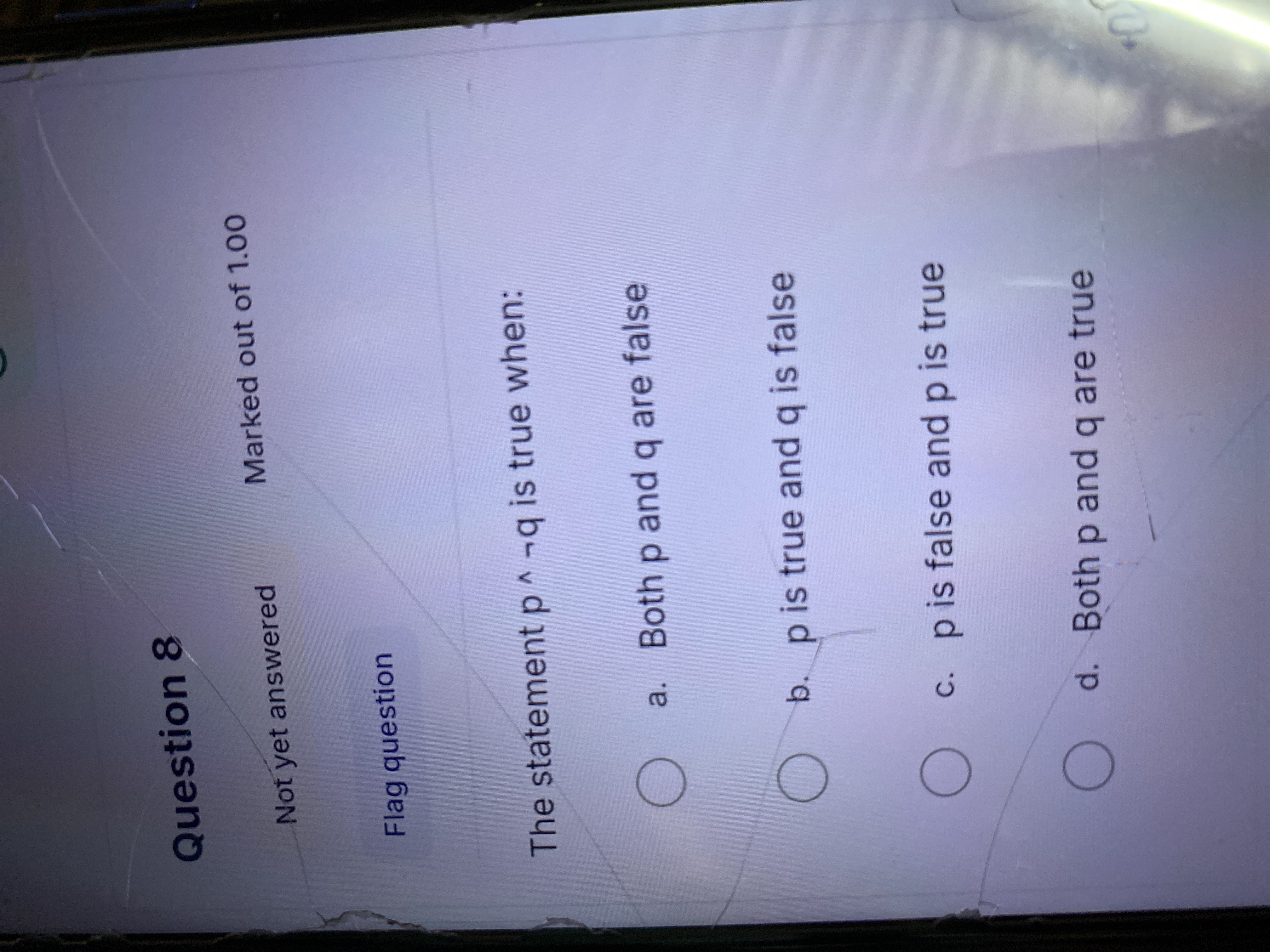The statement p ∧ ¬q is true when:

Understand the Problem
The question is asking under what conditions the logical statement 'p ∧ ¬q' is true, looking for the correct combination of truth values for p and q.
Answer
The statement $p \land \neg q$ is true when $p$ is true and $q$ is false.
Answer for screen readers
The statement $p \land \neg q$ is true when b. $p$ is true and $q$ is false.
Steps to Solve
-
Understanding the logical statement The statement $p \land \neg q$ means "p is true and q is not true". For this statement to be true, $p$ must be true and $\neg q$ (the negation of $q$) must also be true.
-
Evaluate the conditions for p and q We need to establish the truth values:
- $p$ should be true.
- $\neg q$ is true if $q$ is false.
- Final combination Thus, for $p \land \neg q$ to be true, the combination of truth values must be:
- $p$ is true
- $q$ is false
This leads us to the only condition among the options.
The statement $p \land \neg q$ is true when b. $p$ is true and $q$ is false.
More Information
In logic, the AND operator ($\land$) means both conditions must be true for the entire statement to be true. Negation ($\neg$) flips the truth value of the statement that follows it. Therefore, knowing the conditions for $p$ and $q$ is fundamental in logical operations.
Tips
Common mistakes include:
- Misunderstanding negation: Remember that $\neg q$ means "not q", so if $q$ is true, $\neg q$ is false.
- Mixing up the conditions required for the AND operation: Both conditions need to be true, so ensure you have both $p$ true and $q$ false.
AI-generated content may contain errors. Please verify critical information